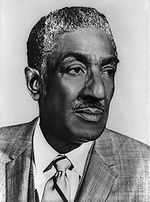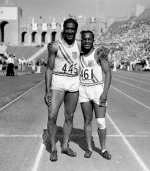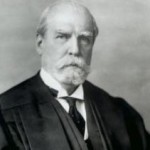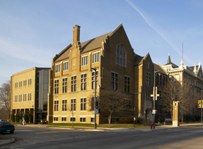Another Little-Known Fact: Ralph Metcalfe Was a Marquette Law Student (at Least for a While)
 Ralph Metcalfe (1910-1978) is one of the best-known of all of Marquette University’s African-American alumni. A member of the undergraduate class of 1936, Metcalfe achieved great prominence as an athlete at Marquette and as an educator and a public servant in his subsequent life.
Ralph Metcalfe (1910-1978) is one of the best-known of all of Marquette University’s African-American alumni. A member of the undergraduate class of 1936, Metcalfe achieved great prominence as an athlete at Marquette and as an educator and a public servant in his subsequent life.
In the 1930’s, Metcalfe and Jesse Owens computed neck and neck for the unofficial title of the greatest sprinter of the decade. Metcalfe won a total of four Olympic medals in 1932 and 1936, and while at Marquette, he equaled the world record for the 100-yard dash and set or tied NCAA records in both the 100-yard and 220-yard dashes. (His time in the 220-yard straightaway is still the official NCAA record and one that is likely to last since the event is no longer run.) Although the younger Owens bested Metcalfe in the 100-meter dash at the 1936 Olympic Games in Berlin, Owens never matched Metcalfe’s best times as a collegiate runner. In 1975, he was a member of the second class inducted into the National Track and Field Hall of Fame.
After Marquette, Metcalfe went on to a successful career as track coach and instructor in political science at Xavier University in New Orleans. (He also picked up an M.A. degree in Political Science from the University of Southern California.) After service in the U.S. Army during the Second World War, the Georgia native returned to Chicago, where he had lived prior to enrolling at Marquette.
In Chicago, he achieved additional success as a businessman and politician. A Democrat, he served four terms as a Chicago city alderman, and in 1971 was elected to the United States Congress, in which he served until his death in 1977. As a Congressman, he was one of the founders of Congressional Black Caucus.
What is not so well known is that Metcalfe was also a Marquette law student from 1934 to 1935. The primary reason that this is not better remembered is that Metcalfe’s stint as a law student was relatively brief and that he transferred back to the undergraduate college during his final year at Marquette.
Metcalfe enrolled at Marquette during the 1931-1932 academic year and competed in the 1932 Los Angeles Olympic Games as a Marquette student. In 1934, he transferred to the Law School without having yet earned an undergraduate degree. There was, however, nothing unusual about such a course of action in 1934, since two years of college work had been a prerequisite for enrolling at the Law School since the early 1920’s. However, in 1934, the Law School announced that all students who enrolled after January 1, 1935, would have to present three years of undergraduate work. (Technically, this remains the requirement today.)
Whether or not Metcalfe had earned three years of college credit before the fall of 1934 is not clear, but at that point the requirement was still just two years, which he had clearly completed.
Although Metcalfe was an excellent student — he was elected a member of Alpha Sigma Nu, the Jesuit Honor Society — and when he received the Ph.B. degree in 1936, it was awarded cum laude — he apparently found his studies at the law school quite challenging. In Jeremy Schaap’s recent book on Jesse Owens, he reports that Metcalfe pulled out of a much anticipated race with Owens in the spring of 1935 (in Milwaukee of all places) because he had to study for his Law School exams.
However, by the following fall, Metcalfe had apparently decided not to pursue a career in law after all. The October 10, 1935, Chicago Tribune reported that he had transferred from the Law School back to Marquette’s undergraduate college, and it was the undergraduate college that awarded him his degree in the spring of 1936. Apparently, the fact of his transfer was not everywhere noted; for example, a February 9, 1936, story on Metcalfe in the New York Times described him “as a law student at Marquette.”
Today, Metcalfe is best remembered at Marquette through the periodic exhibits pertaining to his career that are staged by the University Archives and by the attachment of his name to the university’s outstanding athlete award, to two prestigious undergraduate scholarships, and to the university’s Ralph Metcalfe Chair, which is used to bring noted African-American scholars to the Marquette community.
However, we can also add his name to the list of remarkable individuals who passed through the Marquette Law School during the 1920’s, 1930’s, and 1940’s, but who made their mark outside of the legal profession, a list that includes the likes of NFL players Lavern Dilweg, Biff Toucher, and Dan McGinnis; actor-athlete-singer Paul Robeson,;actor Pat O’Brien (who played Knute Rockne in The Knute Rockne Story); circus giant and actor Clifford Thompson; and controversial politician and hipster Joe McCarthy.
The picture below depicts Metcalfe (L) and sprinter Eddie Tolan at the 1932 Olympics.



